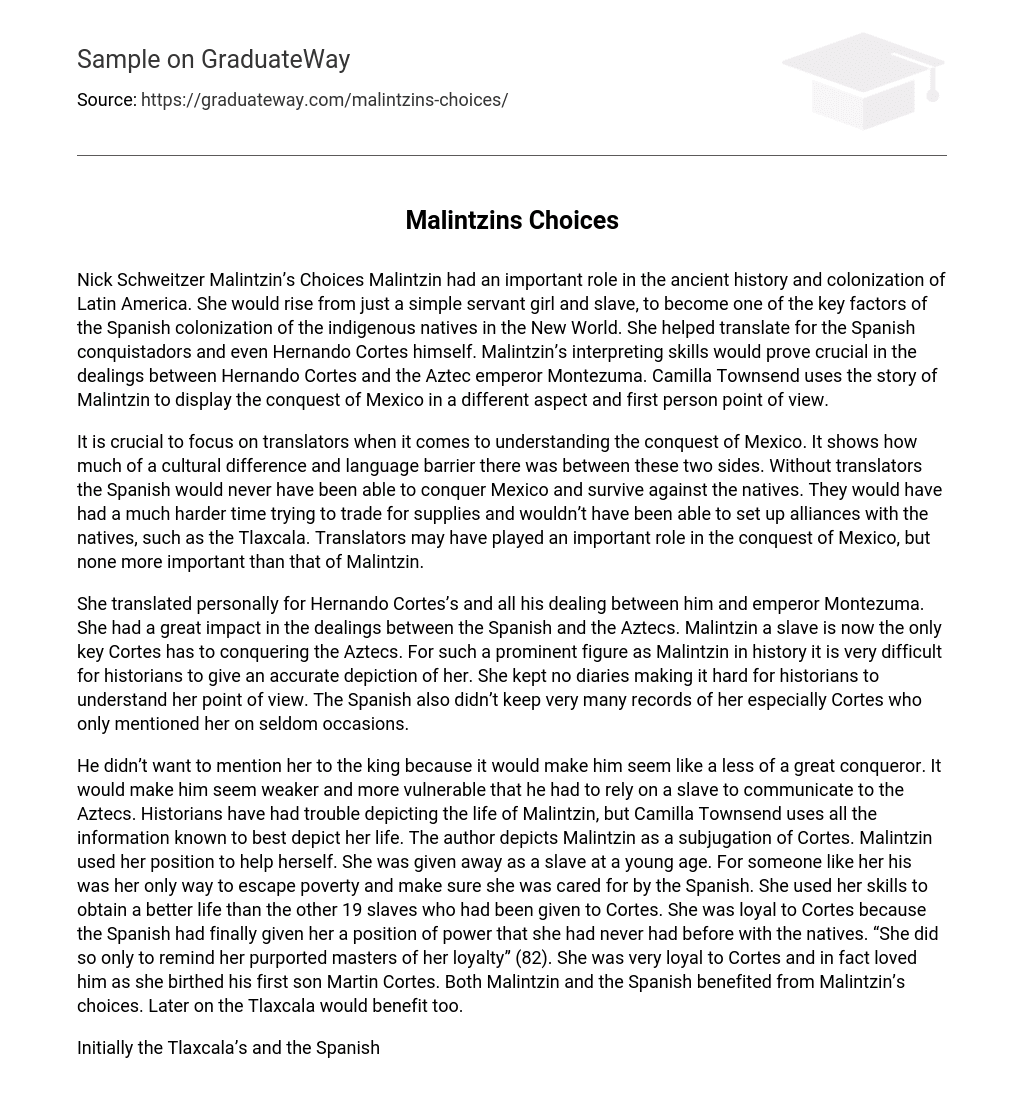Nick Schweitzer articulates that Malintzin played a significant role in the history and colonization of Latin America. Despite starting as a humble servant girl and slave, she eventually became an influential figure in the Spanish colonization of the indigenous natives in the New World. Malintzin’s invaluable contribution included serving as a translator for the Spanish conquistadors, including Hernando Cortes himself. Particularly, her interpreting skills played a crucial role in the interactions between Cortes and the Aztec emperor Montezuma. Camilla Townsend utilizes Malintzin’s story to present a unique perspective on the conquest of Mexico from a first-person point of view.
Focusing on translators is essential for comprehending the conquest of Mexico, as it highlights the significant cultural disparity and language obstacle that existed between the Spanish conquerors and the native population. Without translators, the Spanish would have been incapable of subduing Mexico and enduring amidst the indigenous people. The acquisition of necessary resources through trade and the establishment of alliances with indigenous groups like the Tlaxcala would have been significantly more challenging without translators. Among these translators, none played a more crucial role in the conquest of Mexico than Malintzin.
Malintzin, a slave, played a crucial role in facilitating communication and negotiations between Hernando Cortes and Emperor Montezuma during the Spanish-Aztec interactions. Due to her significant influence in this historical context, historians face challenges in accurately representing her. The absence of personal diaries written by Malintzin makes it difficult for historians to grasp her unique perspective. Additionally, there are limited records of her, particularly from Cortes, who only sporadically mentioned her.
The author, Camilla Townsend, effectively portrays the life of Malintzin despite historians’ challenges. The text emphasizes Malintzin’s role as a subordinate to Cortes. Despite being given away as a slave at an early age, Malintzin utilized her position to improve her own circumstances compared to other slaves. Her dedication to Cortes was evident as she demonstrated her commitment through her skills. This loyalty was exemplified by the birth of their son, Martin Cortes. Both Malintzin and the Spanish benefited from her choices, and eventually, the Tlaxcala also reaped the rewards.
Initially, the Tlaxcala’s and the Spanish were enemies, but eventually, with the help of Malintzin, they formed an alliance to fight the Aztecs. “For having arranged with the Tlaxcalans to provide military reinforcements (perhaps as many as five thousand)” (79). With Tlaxcala’s aid, the Spanish advanced towards Tenochtitlan. Despite a failed first attack, their alliance remained intact thanks to Malintzin. This proved beneficial in the end. After conquering other territories, the Spanish kept their promise and spared Tlaxcala from destruction unlike most native settlements.
The author presents Malintzin as a symbol of the complex conquest of Mexico, showcasing different viewpoints from this period in history. The author explores how both parties handled the conflict and how the Spanish effectively assumed control of the New World. By examining the experiences of individuals and their influence on particular events, a deeper understanding of what truly occurred can be attained. This narrative underscores the significance of communication between the Spanish and indigenous communities, emphasizing its profound impact on Spain’s colonization endeavors in the New World.





